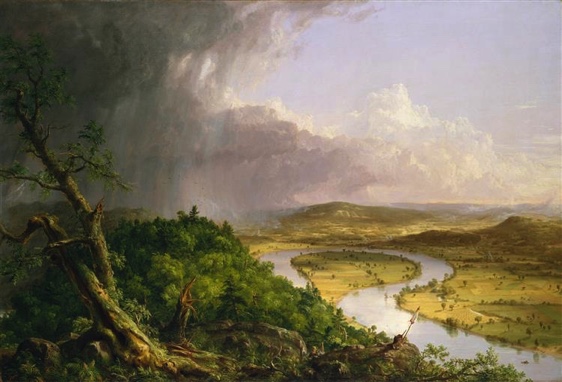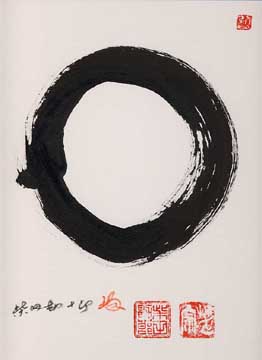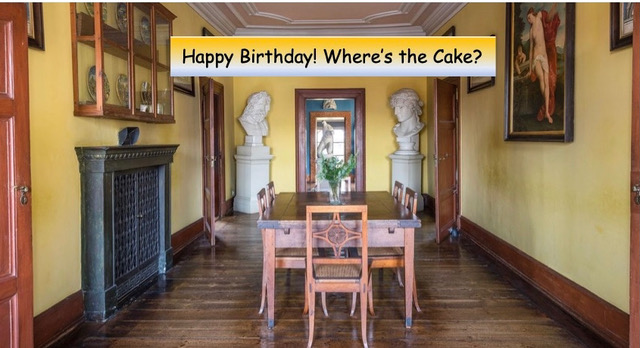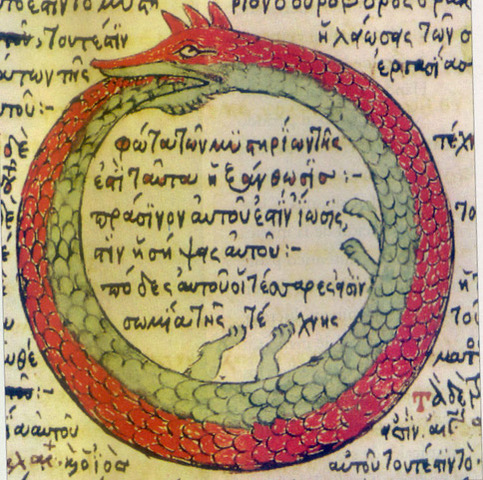Here is a summary of the recent Section for Literary Arts & Humanities meeting of the local group in Fair Oaks, CA. This meeting occurred on February 6, 2021 via Zoom.
“At a Glance . . .”
- On February 6 we continued our 2021 work on the Fairy Tale of the Green Snake and Beautiful Lily with a presentation “Goethe in Paradise”
- Our next meetings will continue in this direction, as we deepen our understanding of early romanticism and its relationship to anthroposophy
“Tell me more . . .”
20 / 21 “Under the Sign of Friendship”
The ouroubous motif that appears on this meeting summary comes recommended to us by Goethe, who placed the motif in the Fairy Tale in part to draw attention to an important theme: Friendship.
“As a symbol of eternity, the snake that closes on itself as a circle, recommends itself to our attention. I like to view this as a symbol of a fortunate earthly life. What more can a human being desire, but that it be granted him to connect the beginning with the end, and how may this occur but through the continuance of affection, trust, love, and friendship.”
— Goethe
Last night we discussed this theme of friendship in the Fairy Tale by looking at two representative friendships of great importance to anthroposophy: the friendship of Karl Julius Schröer with his young student Rudolf Steiner (age 20 / 21 at the time), and the friendship of the slightly older Goethe with Schiller. We began with the first friendship: Schröer and Steiner. Using biographical materials that included statements from The Course of My Life, the Lindenberg biography, Emil Bock, and historical photos, we attempted to understand Schröer’s significance as a friendly mentor and as a representative of “die Schöne Wissenschaften.” This was done for two reasons:
- To better understand why Steiner thought that this acquaintance with Schröer and with the literary arts (“die Schöne Wissenschaften”) was of such critical destiny importance to him;
- To better understand the significance of Schröer’s birthday gift of Goethe’s Fairy Tale to Steiner on the occasion of Rudolf Steiner’s 21st birthday. (And, as this month is Steiner’s birthday month, it seemed an auspicious moment to start such questioning.) What was going on in Schröer’s mind? Why did Steiner, enrolled as he was in a prestigious technical college, spend so much time with the literary arts at this formative moment? As Emil Bock pointed out, Schröer’s classes were not exactly barn burner affairs — no students crowding in at the windows as it was with Fichte in Jena back in the day. Sometimes, Bock tells us, there were only three persons in Schröer’s class: Schröer, Steiner, and Goethe. I don’t know about Harvard, but at UCD if I had only one student and one ghost in my class, my class would be canceled. Now at Oxford, however . . .
. . . the Schöne Wissenschaften have been put aside and overlooked to the “detriment of humanity . . .”
— Rudolf Steiner
Rather than summarize in detail what was in fact another offering in the “Kitchen Talk” lecture series that our local group has hosted in past years, I instead will post the content in essay form on the local group’s website in the near future if I get a chance.
UPDATE June 1, 2021: I have posted this presentation as the essay “Goethe in Paradise.” Click this sentence to read the essay in our Books & Essays section of the website. This essay also appears as the Afterword in the recently published new translation of The Fairy Tale by Goethe. This translation makes this foundational text of anthroposophy available for the 21st century for a modern reader audience. Click this sentence to preview or purchase the book. This translation appears under the new imprint SageCabinPublishers.com

“The Oxbow” by Thomas Cole
“Where are we going, then? Always towards home.”
And so, our local Section group enters the year 2021 with our attention spanned between “die Goethezeit” and modernity. An interesting balancing act, eh? Our work with Weimar Classicism and early romanticism prepares us to better understand the significance of this formative time for anthroposophy. We come recommended directly to that study by Rudolf Steiner, who came recommended directly to that study by Schröer. In respect to Weimar Classicism, we build upon our prior work with Goethe, Novalis, and Schiller, notably. In respect to the late-romantic and modernist era, we began our exploration with Hermann Hesse and Rainer Maria Rilke. But of course prior to that and in addtion, we spent more than a year on Romanticism generally and the major British Romantics in particular. Of course, there are so many other writers deserving our attention — in Europe and elsewhere! To find connections between literary texts and to foster the intelligence that thinks in metaphor — is that not partly what we are about? Oh, “time, cash, strength, and patience” — as Melville complained in Moby Dick.

Enso
Next week we’ll continue the journey. Our plan is to keep meeting weekly on Zoom, at least until the late spring — and then take stock of the personal and public situation. Brian Gray has agreed to meet with us in May, close to the birthday of Novalis. Brian will talk to us about star configurations around the year 1790. Our meeting last night contextualized the Fairy Tale in respect to the biographies of Steiner and Goethe, as noted. Our next meetings will continue with a closer look at the Fairy Tale in particular and fairy tales generally. I’ll probably talk about Schiller’s Aesthetic Letters next week.

“Have some tea!”
A Zoomable Feast?
But of course, all work and no play makes you-know-who a melancholy you-know-what, as Stephen King noted so cinematically in The Shining — therefore, salons and perhaps small group readings will play a part in our yearly activities. TBD. Any volunteers? In the past, field trips and social events such as salons were a needed counterweight to “serious literary work.” Gulp. Alas, as we are still in isolation, we must absent ourselves from such felicities for a time. Much like those German refugees in Goethe’s novella (the book that contains the famous Fairy Tale), let’s make do for the Time Being’s sake with stories “of everything and of nothing” — told on Zoom.
And finally, here’s another sign of the times: a link to a very recent article in the New York Review of Books (just popped into the inbox today). The article talks about two late eighteenth-century individuals that our local group discussed quite a bit in previous meetings, Mary Wollstonecraft and her daughter Mary Shelley. I know that some of us are subscribers to the NYRB, and if you log in you can read the complete text. If not, it’s still a heads up concerning recent publications. Click Here to Read the first paragraphs of the article. And here are links to our local group’s website, to pages that summarize meeting discussions concerning Mary Shelley that occurred in 2019.
“Only connect.”
— E.M. Forster“Books are a uniquely portable magic.”
— Stephen King“To romanticize the world is to make us aware of the magic, mystery and wonder of the world; it is to educate the senses to see the ordinary as extraordinary, the familiar as strange, the mundane as sacred, the finite as infinite.”
— Novalis

